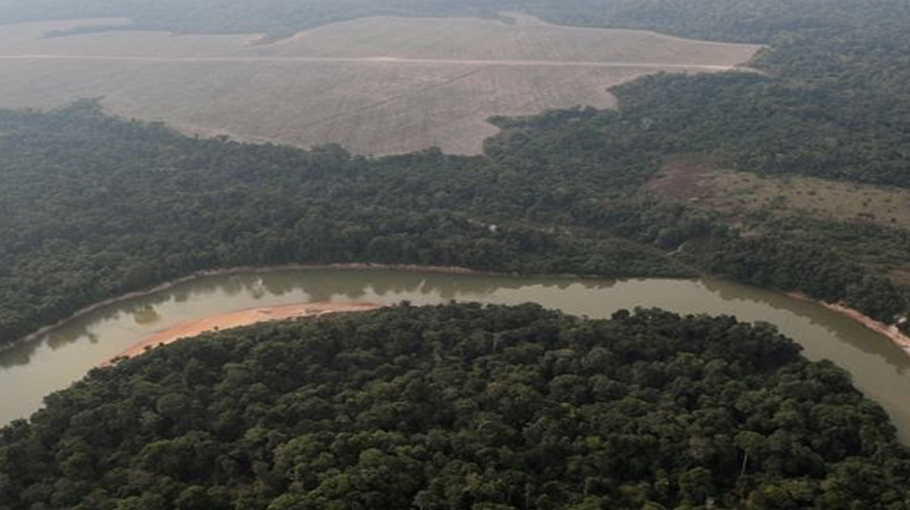How Lula can save the Amazon


Luiz Incio Lula da Silva has green cred. Joining the global climate summit in Egypt last November to the cry of “Brazil is back!,” the president-elect had no trouble convincing the world’s environmental intelligentsia that he could deliver on the promise to end deforestation in the Amazon by the end of the decade.
He had gotten so close already. Forest-clearing in the Amazon declined by about 80% between 2004 and 2012, during his first two terms in the presidency and the first couple of years under his handpicked successor, Dilma Rousseff.
Deforestation went into overdrive over the last four years under President Jair Bolsonaro, who showed no interest in protecting the rainforest from logging, mining or agribusiness. But with another term in office, hoped the crowd in Egypt, Lula could turn Brazil around again.
For all his good intentions and grand declarations, he may fall short.
The tools deployed by the federal and state governments, from expanding protected areas to regularizing land tenure and improving satellite monitoring, were critical to discouraging farmers and cattle ranchers from cutting down the forest 15 years ago. But for Lula to save the Amazon over the next 10, he must also offer a viable business plan to the farmers and ranchers who live off it.This might come across as unseemly to believers in punishment as the only valid tool to fight the crime of deforestation. But farmers need a profitable way to keep land out of production. Lula will not come anywhere near achieving his goal without their wholehearted help.
Soy Moratorium
The toolkit back then was mostly focused on penalties to raise the cost of deforestation. Slaughterhouses boycotted cattle from illegal pastures. Subsidized government credit was restricted for farmers in heavily deforested municipalities. Big trading companies like Cargill signed up to the “Soy Moratorium,” committing not to buy soy grown on land cleared after 2008.
It was not enough. “The economic benefits of fully complying with the forest code are very low, whereas the costs are substantial,” concluded a study by researchers at the Institute for Environmental Research of Amazonia and the Federal University of Minas Gerais. “Illegally deforested areas provide a sizable portion of the income of Amazon farmers. In addition to forgoing this income, farmers are faced with the costs of restoration.” Making the business case for landowners is going to require a lot of money. Daniel Nepstad, one of the foremost international experts on the Amazon, who runs the Earth Innovation Institute in San Francisco, estimates that pristine rainforest in the Amazon is worth about $300 per hectare, on average. Cleared for production, by contrast, it’s worth about $1,200. That is even if the land was cleared illegally before 2008, benefitting from a government amnesty for unlawful deforestation before that date.
Closing the gap, as it were, is going to take an order of magnitude more money than what is available through government-run channels like the Amazon fund, which so far has received about $1.3 billion, from Norway, mostly, as well as Germany and the state oil company Petrobras.
Can Lula live up to his green cred? For starters he must ensure the rule of law, which is so evidently lacking in the region. “Grileiros,” who clear land and lay claim to it with fake paperwork, must be brought to heel. So must illegal loggers, miners and drug traffickers, who hack swathes through the forest. But the effort must come with capital for farmers to make ending deforestation work for them.
Promising precedents
Last December, Guyana signed a pathbreaking deal to sell $750 million worth of carbon credits to U.S. oil company Hess Corporation, at a price between $15 and $25 per ton of avoided emissions of CO2.
Guyana will invest the money in its Low Carbon Development Strategy, which will fund renewable energy for some communities, land titling for indigenous communities, repairing canals, climate adaptation and community-led programs, among others. A report by the Earth Innovation Institute estimated that Brazil could receive $13 to $48 billion by 2030 from selling forest carbon credits under similar REDD+ programs to reduce emissions from deforestation and forest degradation in the Amazon states, reducing carbon emissions from this source by 90%, or about 2.5 billion tons of CO2.
It could provide funding for monitoring and law enforcement, credits for farmers to adopt forest-friendly agriculture projects, investments in new technologies and bio-economy startups. Already, the states of Acre, Mato Grosso and Tocantins are working to set up programs to sell carbon credits. It is unclear whether Lula and, critically, his environment minister Marina Silva will buy into a market-friendly model of conservation.
Nepstad, who recently visited with members of the administration to discuss forest preservation, thinks it may be putting too much hope in government-run financial vehicles like the Amazon Fund. He worries that Silva is not particularly well disposed toward farm leaders.He is nonetheless optimistic. “I didn’t hear anybody say no offsets,” he said. That’s good news, he adds, because “without this there are no other ways.”
Eduardo Porter is the author of “American Poison: How Racial Hostility Destroyed Our Promise” and “The Price of Everything: Finding Method in the Madness of What Things Cost.”
Source: Bloomberg


